Rose Vesterland variety is considered one of the best varieties in the group of bush and plenty roses. Spectacular bright appearance, long and abundant bloom, resistance to diseases and frosts are the most significant advantages in the world of florists and flowerflowers. And this rose fully corresponds to them!
In order to grow on its site, this "miracle flower" needs to still know certain features of planting and care for the perennial. The article is all information on the cultivation of Westerland roses, including recommendations and advice of experienced flowerflowers.
Rosa Westerland, description of the variety
- Vesterland rose varieties from Germany, widely used in decorative gardening as a bush or plenty variety.
- The name of the variety gave the German breeding officer Cordes in honor of a small town located on the island of Zyult in Germany. Botanist crossed 2 varieties of roses, golden and white-pink-orange colors. The resulting spectacular variety of roses quickly became popular not only at home, but also all over the world, due to a number of positive criteria and the ADR quality certificate. A similar high assessment of the international union of flower water is assigned only to highly elective and hardy varieties.
- The main decoration of any rose variety is his flowers. Westerland roses inflorescences are distinguished by large sizes and an unusual bright color resembling a stormy mix of red, yellow, pink and orange shades. The semi-world loose buds are dissolved at once somewhat (from 5 to 10) pieces, forming spectacular lush floral brushes.
- An interesting feature of the rose Westerland is unstable coloring of flowers, changing depending on weather conditions and flowering period. Buds are revealed with bright yellow, over time they become paler, a gentle apricot shade, and in the process of fading there are already a pinkish color. The blossomy flower of roses has quite large (10-12 cm) parameters and resembles a slightly dumped shape of the bowl.
- This rose variety is valued for prolonged and abundant bloom, when over the summer until late autumn, the bush is almost constantly in the flowering process. Rose blooms "wave-like" when the blooming brushes gradually overlapped already blurred inflorescences. The variety is highlighted by a resistant fragrant aroma propagating long distances.
- A slightly elongated glossy leaves of roses shrubs have a saturated olive green color, which beautifully shams and contrasts with bright flowers.
- Rose plenty Westerland forms well branched, stronger and reprehensive bush. Stems are dense, but brittle (although they grow quickly), spinlessly covered with spines.
- During the growth of the rose bush strongly (up to 1-1.4 m), it grows into width (but not falling apart, it keeps compact), a bush reaches the height, on average, 1.5-2 m. In the southern regions with a warm climate, Rose This variety is more often cultivated as a vacuum culture when the stalks reach a 3-3.5-meter mark.
- The grade is self-sufficiently as in a single landing and in group, and often it is used to create live flowering hedges. The dimensions of the adult plant is important to consider when planning group landing roses.
- The variety is considered sufficiently resistant to a number of diseases, rapidly growing and frost-resistant (zone of winter resistance 5-9).
Rosa Westerland, reviews
- Lost in the 70s of the last century, Vesterland rose varieties have long won the hearts of many flower water from around the world. Russia did not exception. Reviews of summer houses and lovers of pink bushes are sistering with enthusiastic impressions of the beauty of the flowering plant, especially its sophisticated, long weaves, adorning any structure, arch or a gazebo. Special attention deserves a bright saturated fragrance of pink bushes of this variety, which is spread far in the district.
- In addition to aesthetic pleasure, the owners of the varieties note the high stability of the perennial to the environmental conditions. Rose is practically nothing sick, incl. and fungal diseases, not afraid of long rains and winter frosts.
Rosa Westerland, where to buy?
- Rose Schrab Westerland can be purchased in special botanical nurseries or gardeners. It is best to choose seedlings in corporate packages with a variety features, planting conditions and further plant care. In addition to this information, the manufacturer of the planting material should be present on the original packaging.
- Choosing a rose saplings in advance, attention should be paid to the kidney of the plant to be labeled and do not wake up ahead of time, when there is still a long time before the landing in the soil remains. Semi-scratched kidneys are suitable only for "fast" landing.
- Naturally, plants acquired in pots, with a closed root system, better and faster rooted in the soil. The open roots of the purchased roses should not be overwhelmed, patients or damaged.
Wasterland rose landing
Sit roses of this variety the same as most others, however, have some features of the landing, which is worth paying attention to. It is especially important to carefully study the conditions and agrotechnik landing roses Westerland beginners who have not previously engaged in gardeners.
- Rose Westerland, as a rule, is cultivated in an open soil, although some flower growers practicing the growing of a pink bush and at home. Naturally, the rose grown in the room pot will be significantly smaller compared to the garden "Beauty".
- The conditions and agricultural equipment of the rose landing into the container or the flowerbed are practically no different. Good lighting, warmth, nutritious soil and regular ventilation are the main conditions for the proper cultivation of potted roses.
- Landing material with a closed root system can be planted at any warm season.
Conditions for landing Roses Westerland
- Saplings are planted in spring or autumn seedlings. The main condition is warm weather and at least 2-3 weeks of stable heat for the final rooting of the plant.
- A landing place must be chosen solar, but at the same time, without hitting direct scoring rays at noon time. The optimal option is solar lighting in the morning and in the evening, and the rest of the time is a light scattered half from the wall or "neighboring" plants. In such conditions, pink bushes will not receive sunburn and can delight surrounding long flowering.
- In addition to the conditions of natural lighting, it is important when choosing a place to pay attention to the windiness. Rose Westerland has fragile breaking shoots, which means that it will not be able to grow in an open place with drafts and gusty winds, it will be constantly clouded. Therefore, this rose variety will appropriate to position the walls, arches or lattice better from the south side of the site. The grille and arch will become a comfortable support, to which you can tie the long vacancies of pink bushes.
- The best soil for roses will be fertile, breathable, loose black soil with high groundwater. If the groundwater takes close to the surface, pre-prepare artificial embankment and build drainage. If the soil is heavy and tight - sawdust or river sand in it, and if sandy is a little clay. The recommended pH level is 6-7 units.
Agrotechnology landing roses Westerland
- Roses seedlings are planted into the ground with an open or closed root system. In the first case, the roots should first "soak" several hours in any growth stimulator. In the second, when landing uses the "Turning" method, which allows to preserve the integrity of the earth coma.
- Immediately before planting seedlings, weak or damaged young shoots are cut, the existing leaves are broken.
- Before cooking the landing pit, it is necessary to prepare a plot: to switch, remove all the weed grass and make a fertilizer if necessary. The average sizes of the pits are about half a meters in all parameters (in depth and width).
- On the bottom of the landing pit, you need to pour drainage from rubble, gravel or broken bricks. The thickness of the drain layer depends on the quality of the soil and varies from 10 to 30 cm.
- The prepared drainage is poured by a layer of organic fertilizers: compost, dung-rapid. From above there is already a boarding soil, to which the seedlock of roses is exhibited.
- The place of the seed vaccination is plugged into the soil at 3-4 cm.
- After planting and the dumping of the soil, the plant is abundantly watered and plundered the earth.
- Group landing of Park Rose Saplings Westerland involves observing the interval between bushes at least 50 cm. The distance is retreating from the wall or any structure, near which flower culture landing is carried out.
Rosa Westerland, care features
The care of the rose Westerland at home is not much different from "street" events and includes: regular watering, autumn haircut on the eve of the rest period, good bright lighting and periodic ventilation.
In addition, it is necessary to remove the blurred inflorescences so that Rosa continues to bloom as longer as possible. It is believed that a pleasant aroma of roses is able to improve the mood of a person, making it more balanced and calm.
Consider the peculiarities of the care of the Rose Westerland in the open soil.
Watering and loosening roses Westerland
- Rosa Westerland is a fairly moisture culture requiring regular abundant irrigation.
- Particularly important is the systematic watering of recently planted roses sapling, contributing to their rapid rooting.
- Watering the pink bushes is better in the morning, using a slightly warm dilated water.
- Watering roses, it is important to avoid moisture from entering buds and already discontinued flowers. Also, you should not direct the jet of water under the root in the same place that the erosion of the Earth and the lap of the roots entails.
- After irrigated, the soil must be exploded to ensure the root of the sufficient level of aeration.
- In addition to loosening, the plant needs regular tidwing from weed grass.
- The mulching of a piece of wood sawdust (or any other suitable material) will reduce the amount of work performed in the garden, as it is not necessary to loosen and ride the flowerbed.
Undercalinking roses Westerland
- Westerland varieties roses, like any other cultural plants, need periodic feeding. Fertile soil provides long and abundant flowering rose bushes.
- In the spring time, nitrogen-containing feeders are used as nutrient fertilizers to stimulate the growth and development of pink bushes.
- In summer, the perennial feed the complex fertilizers containing potassium and phosphorus. From the second half of the summer, fertilizers are not made, thus preparing a plant for the upcoming period of rest.
- The norms of fertilizer and the proportions of their breeding with water must be carried out according to the instructions on the package.
Fighting pests and diseases of roses Westerland
- This rose variety has elevated resistance to most diseases and pests, therefore does not need prophylactic spraying.
- In the cool periods of raw rainy weather, a black bacterial spot can be manifested on the foliage of the Westerland bush. The leaves with black spots are broken, and the bush is treated with a fungicidal solution.
- In the fall, the leaves fell on the flower bed and destroy so that insect pests remain in them.
Garting and trimming Roses Westerland
- Given the fact that the long shoots of Roses Westerland differ in brittleness and can break even with insignificant wind gusts (or under the severity of their own flowers), the plant initially need to provide reliable support and garter branches.
- The regular activity for the care of blooming perennial is an annual trimming of Westerland roses. A similar sanitary haircut allows you to remove all patients damaged or too old shoots.
- In addition to sanitary trimming, allowing to make roses bush neat and well-groomed, it is necessary to constantly cut faded inflorescences, thereby providing repeated bush blossom.
- In the first year after landing, experienced flowerflowers are recommended to cut off shoots with blooming kidneys so that the bush cannot bloom. And only in August, when the plant is finally strengthened, you can leave several buds on each of the branches.
- Depending on the pruning, Westerland's rose can be raised by a plenty or semi-supershed shawby shrub.
- How to grow rose Westerland low? To do this, it is necessary to regularly trim the shoots of the plant, forming a relatively low rose bush. It will be necessary to carry out such a procedure not once for the entire growing season, since the rose stems differ in a rapid pace to grow.
Preparing for Winter Westerland Roses
- Rosa Westerland is considered a moderately frost-resistant plant that does not need additional shelter for the winter. This applies to regions with warm climates and snowy winters.
- In the zone of cold harsh winters, roses bushes are covered by the winter with branches (or dry leaves), and top view with nonwoven material, for example, sponbond.
- How to cut a rose Westerland for the winter? It is easy to do so, since the bushes are cut to almost half of the entire length.
Reproduction of roses Westerland
The rose breeds in vegetative ways: staring or dividing the bush.
- The cuttings begin to harvest from the middle of the summer. To do this, the semi-restless shoots with faded inflorescences are cut off the bush. For cuttings, the middle and lower part of the escape will fit, the sophisticated top is thrown away. The cut is made on the scout, over the kidney.
- The leaves are cut on cut cuttings, after which the shoots are placed in the root formation stimulator. Blacks are planted into a container with a nutrient soil mixture, a depth of about 3 cm.
- The container or large plastic bottle is closed with glass or transparent lid. For successful rooting of shoots, you will need a regular watering, a warm room (+ 20-25 0C) and daily ventilation "mini-greenhouse". Under favorable cutting conditions, the roots will be allowed in a month. Passionate seedlings are planted in open ground only for the next year.
- The second method of breeding roses Westerland is the division of the bush on the part. For this, the rose roses are digging in the spring and with the help of a sharp knife divide into several full-fledged parts with 2-3 escapes. The remaining shoots are shortened to 3-5 kidneys. The roots before planting are treated with a clay bolt, for which the cow manure, clay and water are mixed to the consistency of "thick sour cream".
Rose Westerland in Landscape Design
- The flower is ideal for creating alive green hedges, abundantly swept off by buds and emitting a bunny fragrance.
- Rosa Westerland looks perfectly in a single landing, being a bright accent of any flower beds.
- If the varietal roses are planted with other companions, it is important to consider the landscape design in advance so that it does not turn out to be a pesting tasteless mixture of diverse colors. Successfully and harmoniously combined "apricot-pink" inflorescences Westerland with low orange velvets or Santolina cypress. So-born are also suitable. "Neutral" flowers that serve as a background for bright crops: Syzaya oatmeal, wormwood or purple Byzantine. Silver-sisaya foliage of these plants very harmoniously shall with a glossy greens of tall rose Westerland.
- Good roses landing against any conifers. At the same time, it is important to comply with the key rule - so that evergreen "beauties" not closed and did not suffer a pink bush, but only emphasized the beauty of blooming culture.
Thus, the variety of roses Westerland can be grown both as plenty and bush varieties. It depends on the climate of the region and the rules of trimming applied to the perennial. In addition to bright major inflorescences that bloom long and abundantly, the grade is famous for the resistance to a number of unfavorable conditions, including diseases. Foldy, the life-made rose variety Westerland every year attracts attention to an increasing number of florists and ordinary lovers of beautiful flowers.

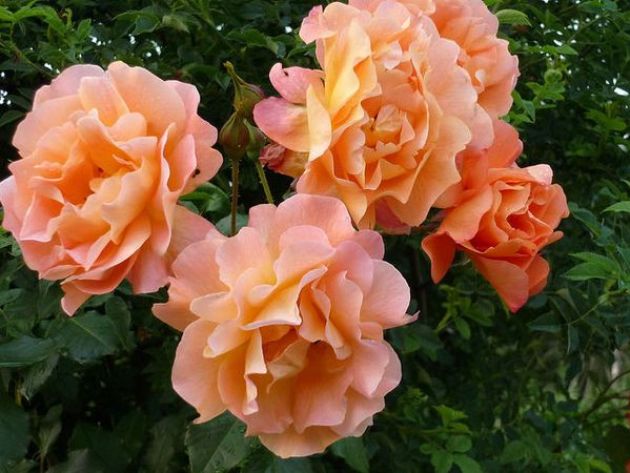
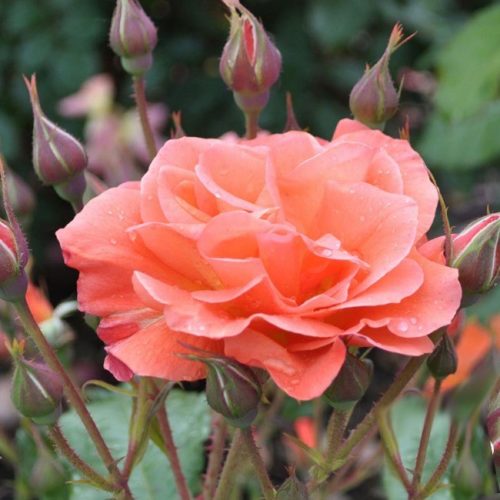

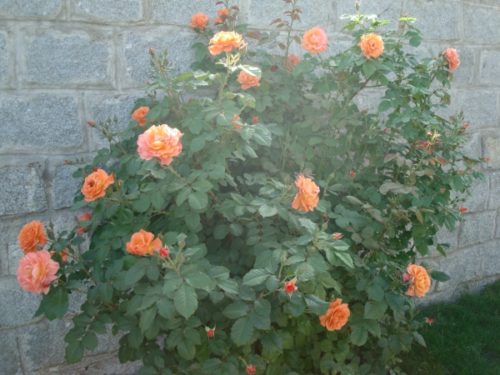

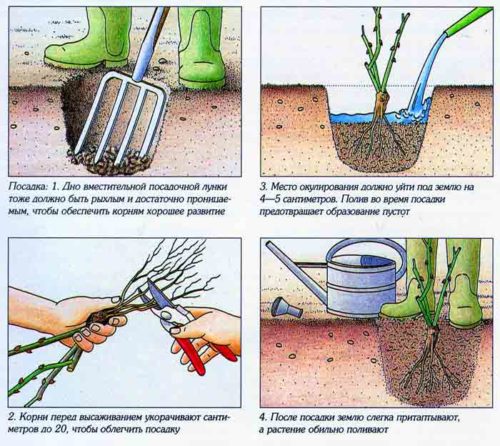

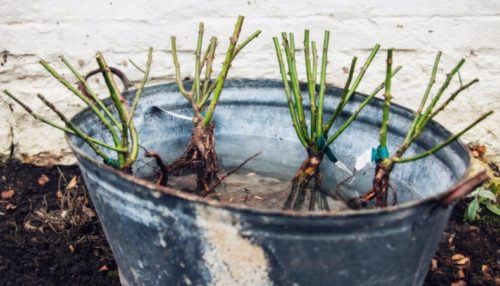
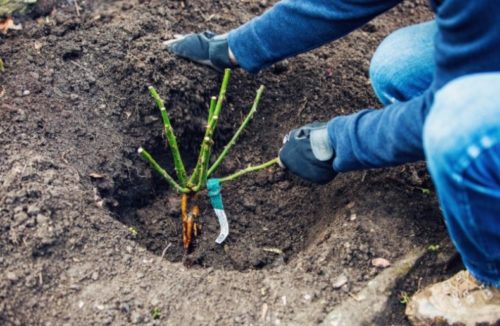
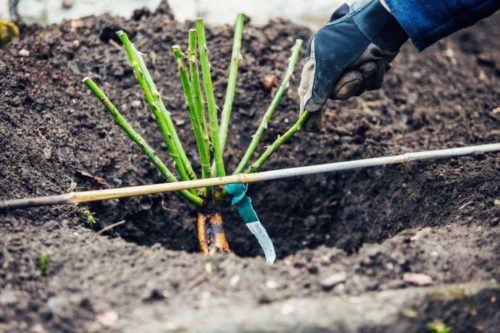

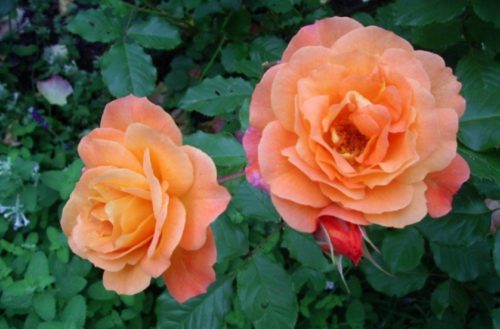


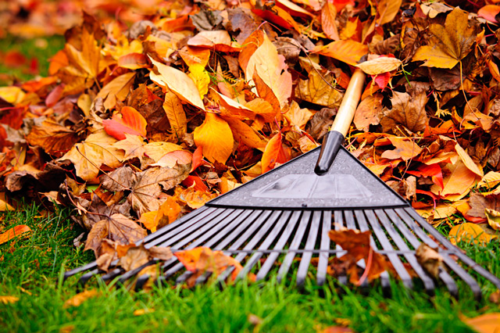
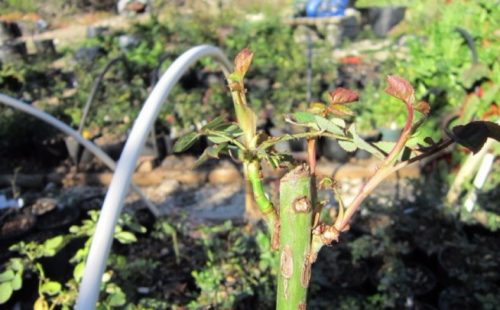
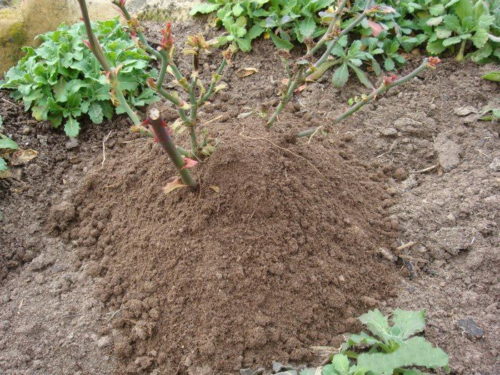

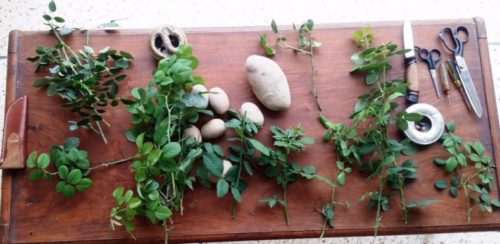

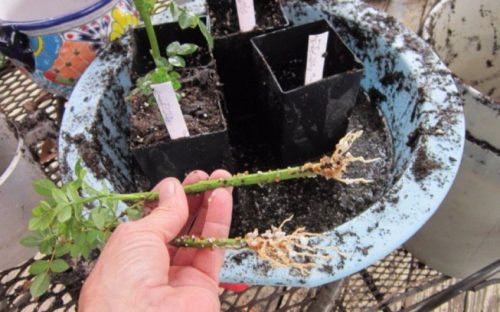
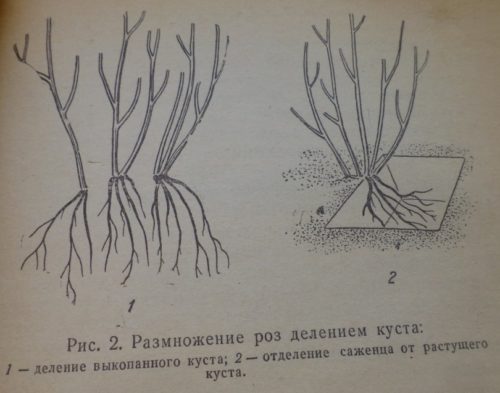

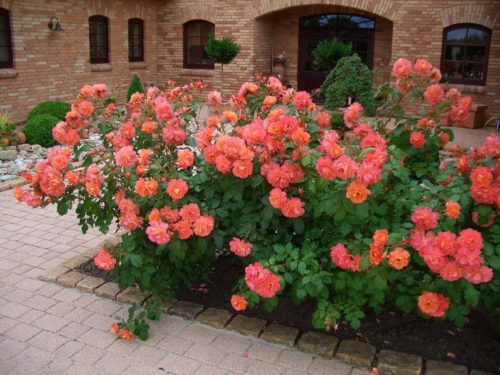
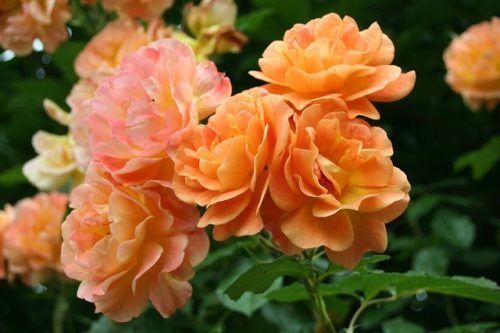














 Start a discussion ...
Start a discussion ...